
Turbulent gas discs (at high redshift)We investigate the formation and evolution of primeval galaxies with a range of initial gas fractions (0 - 100%) using N-body/hydrodynamical simulations.→ Read more
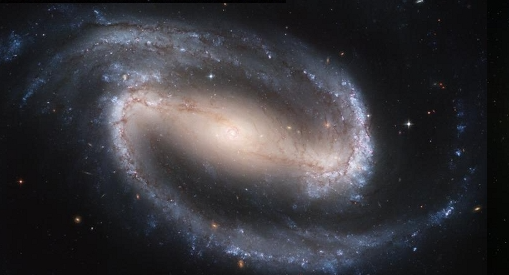
High-redshift Stellar BarsWe investigate the formation and occurence of stellar bars in primeval stellar disc at different redshifts, using N-body/hydrodynamical simulations.→ Read more

The Milky Way BarWe create a dynamical model for the Milky Way from an N-body simulation, which includes a bar with properties remarkably similar to the observed bar.→ Read more

Galactic SeismologyUsing some of the most sophisticated N-body simulations to date, my team and I aim at explaining the origin of ripples observed to be propagating across the Milky Way's stellar disc. Possible sources of this phenomenon are: 1) The perturbation caused by an external system, or 2) An internal mechanism (e.g. the stellar bar). In our view, the former is the more likely explanation.→ Read more

Minimalist Galaxy Models with GasThis model series expands on the minimalist HBD models (see below) by adding a gas component: A rotationally supported gas disc in vertical hydrostatic equilibrium.→ Read more

Minimalist Galaxy ModelsN-body models are a powerful tool to study the dynamical behaviour of galaxies. A family of models consistent of only three components, a Dark Matter halo, a stellar bulge, and a stellar disc, are of particular interest since they represent the ideal trade-off between simplicity and reality. Some of my most recent work relies on the design and analysis of such minimalist models→ Read more
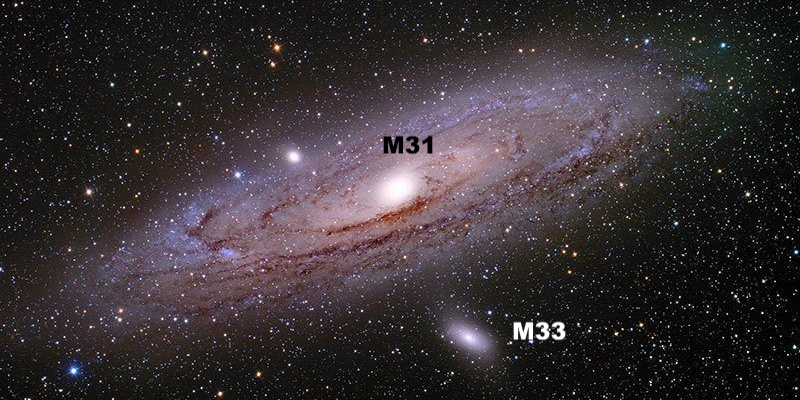
The M31 / M33 SystemThe Andromeda galaxy (M31) - the Milky Way's 'twin' - features a number of satellite systems, the most prominent of which is perhaps the Triangulum galaxy (M33). To this date, it is unclear when did M33 start orbiting around M31. We provide evidence based on analytic orbit integration methods and simulations that M33 may have been around M31 for far longer than previously thought.→ Read more
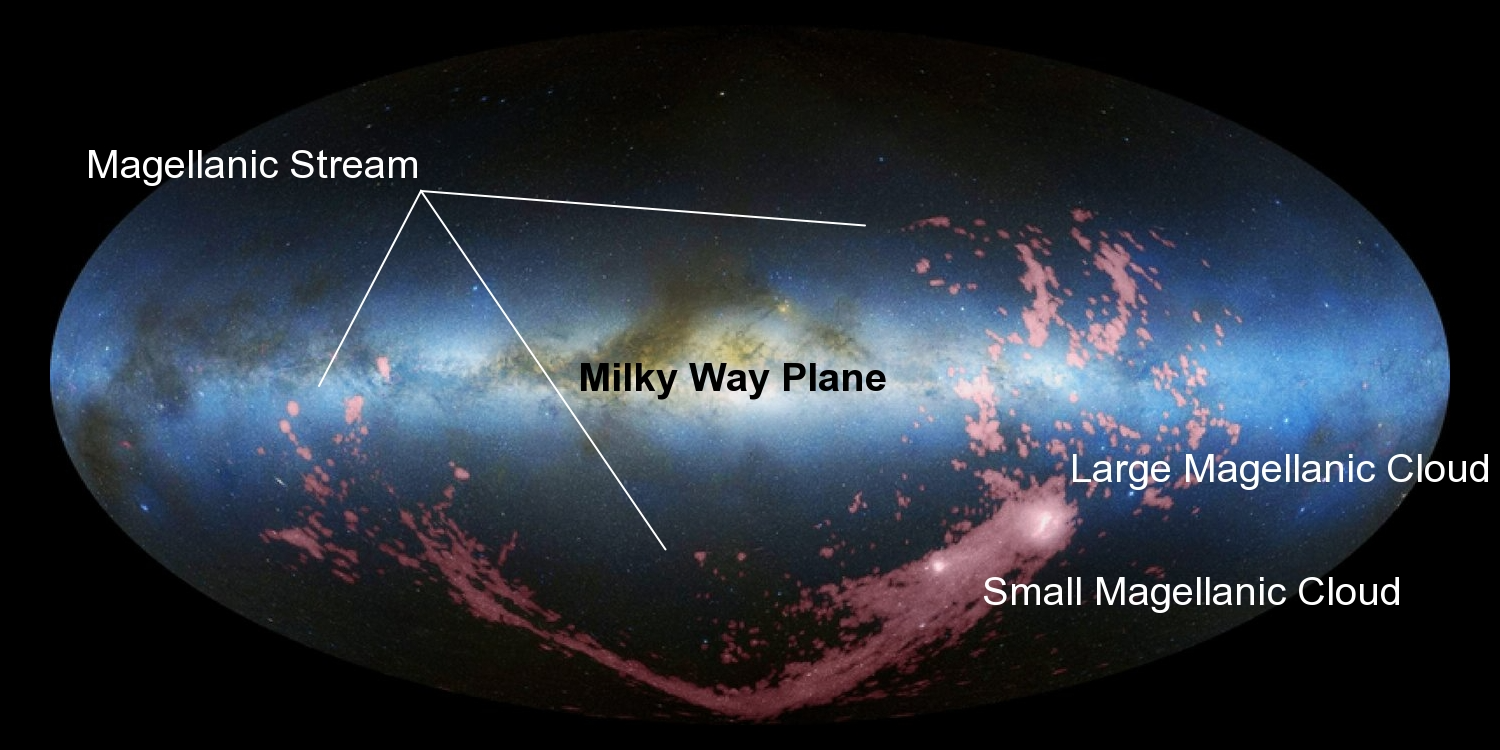
The Magellanic SystemThe Magellanic Clouds (MCs) are the most massive gas-bearing systems falling into the Galaxy at the present epoch. They show clear signs of interaction, manifested in particular by the Magellanic Stream, a spectacular gaseous wake that trails from the MCs extending more than 150° across the sky. Ahead of the MCs is the ‘Leading Arm’ usually interpreted as the tidal counterpart of the Magellanic Stream, an assumption we explore in detail with the aid of complex hydrodynamical simulations.→ Read more
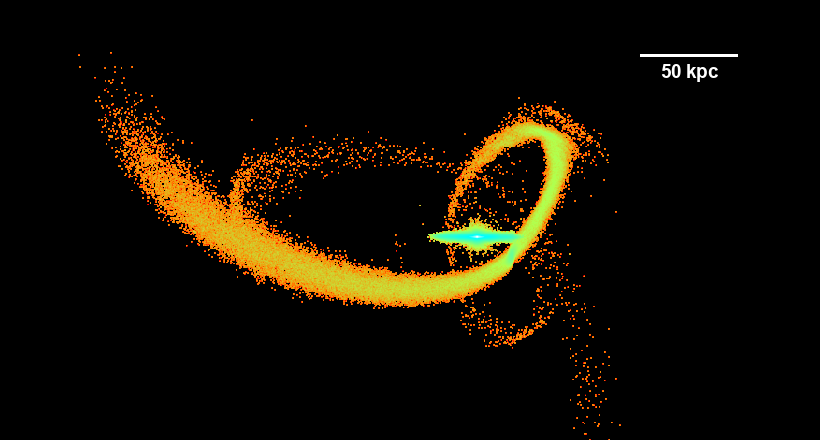
The Sagittarius DwarfThe Milky Way (MW) is surrounded by smaller galactic systems (satellites), such as the Large Magellanic Cloud (LMC) and the Small Magellanic Cloud (SMC), at a distance of approximately 50 - 60 kilo-parsec (kpc) away, and the Sagittarius dwarf galaxy (Sgr), only some 20 kpc from the Sun. But while the Magellanic Clouds (MC) have retained a large fraction of gas their gas up until recently, as attested by the tidal stream known as the Magellanic Stream that extends from them, Sgr appears devoid of gas. Why?→ Read more
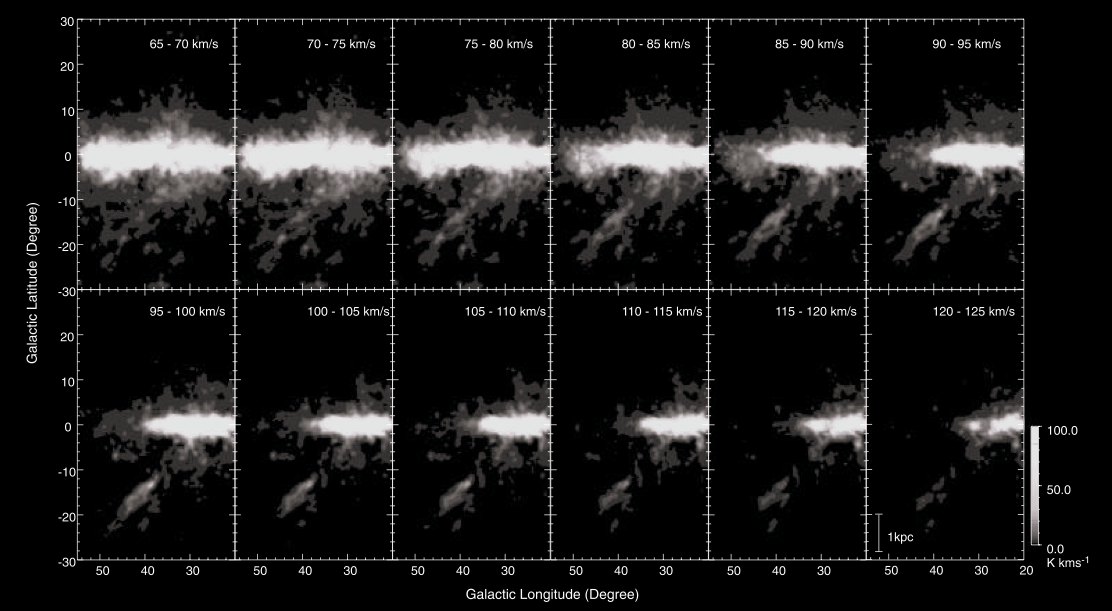
The Smith CloudThe Smith Cloud is a massive Galactic HI structure moving rapidly towards the disc on a prograde orbit. It appears to have no stars associated with it, although it shows a relatively high content of heavy elements. Using N-body/hydrodynamical simulations, we investigate the possibility that it may be a true extragalactic, dark-matter (DM) confined gas cloud recently accreted by the Milky Way.→ Read more

Magnetized Galactic CloudsHigh velocity gas that does not conform to Galactic rotation is observed throughout the Galaxy’s halo. One component of this gas, HI high velocity clouds (HVCs). The recent discovery of enhanced magnetic fields toward HVCs has encouraged us to explore their connection to cloud evolution, kinematics, and survival as they fall through the magnetized Galactic halo.→ Read more

Warm-Hot Intergalactic MediumDiffuse gas in the intergalactic medium (IGM) represents the major baryon reservoir in the Universe at any redshift. At z = 0, the gravitational heating of the IGM by collapsing large-scale filaments has lead to an increasing amount of shock-heated gas - the warm-hot intergalactic medium (WHIM). This phase, predicted to harbour ~50 percent of the baryons in the local Universe, is yet to be detected - a circumstance referred to as the missing baryons problem.→ Read more
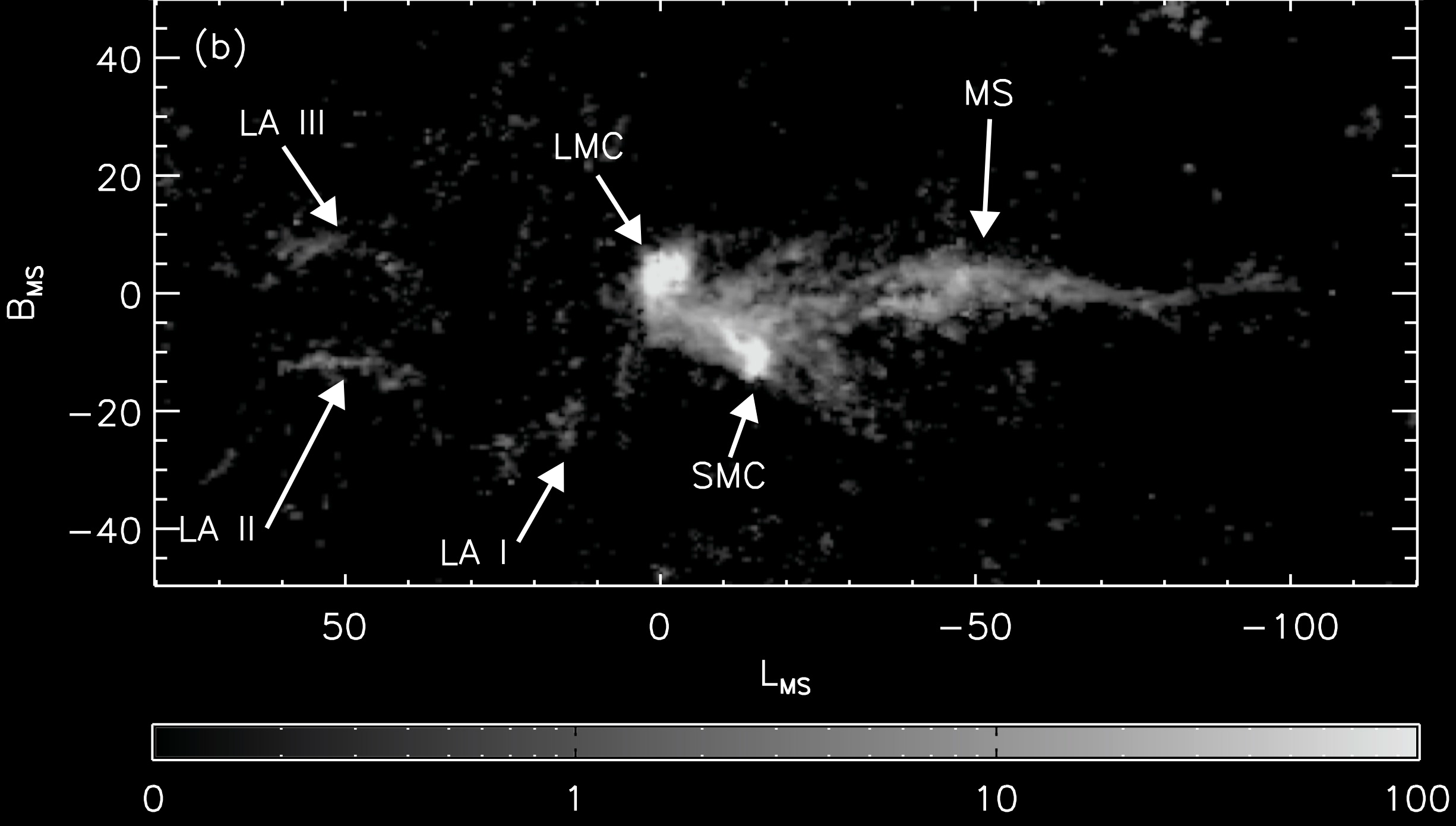
The Magellanic StreamThe Magellanic H I Stream encircling the Galaxy is arguably the most important tracer of what happens to gas accreting onto a disk galaxy. Recent observations reveal that the Stream’s mass is in fact dominated (3:1) by its ionized component. Here we revisit the origin of the mysterious Hα recombination emission observed along much of its length that is overly bright (∼150–200 mR) for the known Galactic ultraviolet (UV) background.→ Read more

Hidden Symmetries in Quantum MechanicsThe hydrogen atom and the isotropic harmonic oscillator are perhaps the best known examples of systems with hidden symmetry, i.e. their corresponding Hamiltonian is invariant under a group of transformations which is larger than the rotation group associated with the “obvious” rotational invariance of the Hamiltonian.→ Read more

Intergalactic HI AttenuationThe intergalactic gas that fills the Universe – mainly composed of hydrogen and helium – is highly ionised. Yet, it contains a small amount of neutral hydrogen (HI), around one part in ten thousand, which absorbs the light from distant galaxies and quasars at rest-frame wavelengths λ ≤ 121.567 nm, corresponding to the Lyman resonant transitions of HI. As a result, this so-called intergalactic attenuation dims and reddens of the colors of high-redshift galaxies.→ Read more